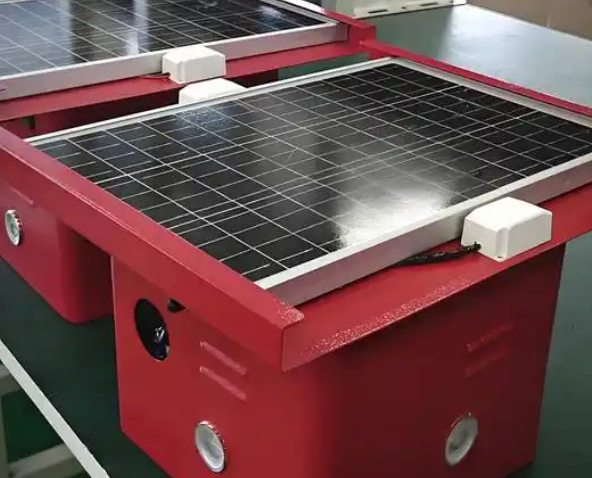Technical parameters
(1) Effective insulation length of 6KV high voltage electroscope: 840mm handle length: 120mm Number of sections: 5 guard ring diameter: 55mm Contact electrode length: 40mm
(2) Effective insulation length of 10KV high voltage electroscope: 840mm handle length: 120mm Number of sections: 5 guard ring diameter: 55mm Contact electrode length: 40mm
(3) Effective insulation length of 35KV high voltage electroscope: 1870mm handle length: 120mm Number of sections: 5 guard ring diameter: 57mm Contact electrode length: 50mm
(4) Applicable voltage level of 110KV high voltage electroscope: 110KV return length 60cm extension length 200cm
(5) Applicable voltage level of 220KV high voltage electroscope: 220KV return length 80cm extension length 300cm
(6) Applicable voltage level of 500KV high voltage electroscope: 500KV return length 160cm extension length 720cm
How to use and precautions
When using an electroscope, care must be taken to adapt its rated voltage to the voltage level of the electrical equipment under inspection, otherwise it may endanger the personal safety of the electroscope operator or cause misjudgment.During the electrical inspection, the operator should wear insulated gloves and hold the handshake part below the protective ring. First, the electrical equipment should be inspected. During the inspection, the electroscope should be gradually moved closer to the live equipment until it emits light or makes sound to confirm that the electroscope is in good condition. The electroscope with a self-inspection system should first press the self-inspection button to confirm that the electroscope is in good condition, and then test it on the equipment that needs to be tested. During the inspection, the electroscope should be gradually moved closer to the device to be tested until it touches the conductive part of the device. If this process has been silent and light indicates, it can be determined that the device is not charged. Conversely, if the device is uncharged, if the self-inspection system is in place, the electroscope should be pressed first to confirm that the electroscope is in good condition, and then tested on the equipment that needs to be tested for electricity, the test should also gradually move the electroscope closer to the device to be tested until it touches the conductive part of the device. If there is a sudden light or sound during the approach process, it is considered that the device is charged, and the approach can be stopped and the power test can be ended. In addition, the windmill-type electroscope is only suitable for indoor or outdoor use in good weather, and it is prohibited to use it under environmental conditions such as rain and snow.
(1) When testing with a high-voltage electroscope, you must wear insulated gloves that meet the requirements; you cannot test alone, and someone must be supervised by you; during the test, it is necessary to prevent interphase or ground short circuit accidents; the human body and the charged body should maintain a sufficient distance, and the distance of 10kV high voltage is 0. Above 7 m.When used outdoors, the weather must be good, and the type of ordinary insulating rod should not be used in rain, snow, fog and high humidity to prevent danger.
(2) Before use, the insulating rod should be stretched to a predetermined length according to the voltage level of the measured equipment (line), a suitable type of indicator and insulating rod should be selected, and the indicator should be checked. The high-voltage electroscope used by the investor must be qualified by electrical testing.
(3) For rotary high-voltage electroscope, the inspected indicator should be screwed to the insulating rod and fixed before use, and the surface should be wiped clean with a silk cloth, and then rotated to the desired angle so that it can be easily observed during use.
(4) For capacitive high-voltage electroscope, the insulating rod is marked with a red line. The part above the red line indicates that there is a capacitive element inside and it is a live part. This part must maintain the necessary distance from the adjacent conductor or grounding body in accordance with the requirements of the "Electrical Industry**Working Regulations".
(5) When using, special attention should be paid to the grip area not to exceed the guard ring.
(6) When using a rotary high-voltage electroscope, the metal contacts of the indicator should gradually approach the device under test (or wire). Once the indicator blade begins to rotate normally, it means that the device has electricity and should immediately leave the device under test.The blades cannot rotate for a long time to ensure the service life of the electroscope.When there is a residual charge and voltage on the cable or capacitor, the indicator blade will turn slowly for a short time, and then stop on its own, so it can accurately identify whether the equipment is out of power.
(7) The power inspection of the line should be carried out phase by phase. When the circuit breaker or isolation switch or other maintenance equipment used for the connection is inspected, the power should be checked separately on both sides of the incoming and outgoing lines.When inspecting the power of multi-layer power lines erected in the same tower, the low voltage and high voltage are tested a priori, and the lower layer and the upper layer are tested a priori.
(8) The power test on the capacitor bank should be carried out after its discharge is completed.
(9) After each use, before shrinking the insulating rod and removing the swivel indicator and putting it in the packaging bag, wipe the surface dust clean and store it in a dry and ventilated place to avoid moisture.The rotation indicator should be kept properly, no strong vibration or shock, and no unauthorized adjustment, disassembly and assembly are allowed.
(10) In order to ensure the use of**, the electroscope should conduct preventive electrical tests every six months.

